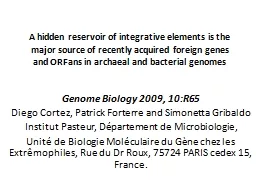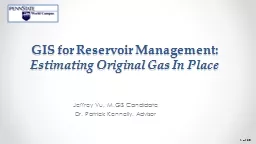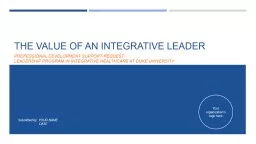PPT-A hidden reservoir of integrative elements is the major source
Author : karlyn-bohler | Published Date : 2019-11-09
A hidden reservoir of integrative elements is the major source of recently acquired foreign genes and ORFans in archaeal and bacterial genomes Genome Biology 2009
Presentation Embed Code
Download Presentation
Download Presentation The PPT/PDF document "A hidden reservoir of integrative elemen..." is the property of its rightful owner. Permission is granted to download and print the materials on this website for personal, non-commercial use only, and to display it on your personal computer provided you do not modify the materials and that you retain all copyright notices contained in the materials. By downloading content from our website, you accept the terms of this agreement.
A hidden reservoir of integrative elements is the major source: Transcript
Download Rules Of Document
"A hidden reservoir of integrative elements is the major source"The content belongs to its owner. You may download and print it for personal use, without modification, and keep all copyright notices. By downloading, you agree to these terms.
Related Documents














